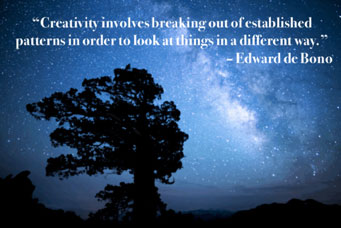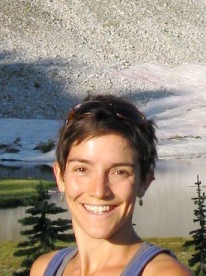By Danya Rumore for EDRblog.org
 Environmental and natural resource conflicts tend to be enormously complicated, emotionally and politically fraught, and seemingly intractable. Take, for example, issues such as conflict over public lands here in Utah. Or debates about what should be done to mitigate and adapt to global climate change. Those embroiled in such situations, and those observing things as they play out, often wonder: is there any potential for a good outcome – or even just a reasonable resolution?
Environmental and natural resource conflicts tend to be enormously complicated, emotionally and politically fraught, and seemingly intractable. Take, for example, issues such as conflict over public lands here in Utah. Or debates about what should be done to mitigate and adapt to global climate change. Those embroiled in such situations, and those observing things as they play out, often wonder: is there any potential for a good outcome – or even just a reasonable resolution?
Photo by stevenbley, protected by creative commons. Altered by EDRP.
In my decade plus of work as an academic and facilitator, I have continuously been amazed by the ability of groups to not only overcome such issues, but to create elegant solutions to seemingly insurmountable problems that add value for all parties involved. I have also consistently seen that moving beyond a “win-lose” framing of issues to identifying and reaching agreement on “mutual gains” solutions almost always requires two critical ingredients: creativity and collaboration.
Unfortunately, there are rarely forums in which truly creative, joint problem solving, and the “freewheeling” brainstorming it requires, can occur. Stakeholders often do not have an opportunity to come together as peers to envision creative approaches for addressing shared challenges. Even when they do, public officials and involved parties often feel they need to toe the party line or carefully chose their words, lest they come back to bite them. Such issues are commonly further exacerbated by a lack of trust and fear.
To be notified when new EDR blog articles are posted, please sign up for our listserv »
For me, one of the most powerful benefits of collaborative processes is that they can overcome such limitations and provide a safe space in which creative, joint problem solving can occur. Rather than encouraging compromise or tit-for-tat trading, effective collaborative processes engage parties in co-creating new conditions and possibilities through collaborative tinkering – or what Judy Innes and David Booher refer to as “bricolage.”
As Innes and Booher explain in their excellent 1999 article “Consensus Building as Role-playing and Bricolage” (which I suggest anyone interested in collaboration and consensus building read), one of the greatest values of truly collaborative processes is that they can allow players to “check their guns at the door” (p. 20) and “let go of factual or assumed constraints and to develop ideas for creating new conditions and possibilities” (p. 12). Bricolage, Innes and Booher explain, “is a type of reasoning and collective creativity fundamentally different from the more familiar types, argumentation and tradeoffs…[Traditional] modes of problem solving or dispute resolution typically allow zero sum allocation of resources among participants or finding the actions acceptable to everyone. Bricolage, however, produces, rather than a solution to a known problem, a new way of framing the situation and of developing unanticipated combinations of factions that are qualitatively different from the options on the table at the outset” (p. 12).
One of the key challenges for me and other collaborative professionals is figuring out how to cultivate this kind of group creative problem solving and collective tinkering. Doing so can be quite difficult, particularly in high-pressure situations, or in contexts where stakeholders are not accustomed to brainstorming together – and perhaps not even used to engaging in dialogue with each other.
This is a key part of the reason that Lawrence Susskind at MIT, I, and our colleagues at the Program on Negotiation at Harvard Law School (PON) and the Consensus Building Institute have been experimenting with what we call “devising seminars.” Originated by Roger Fisher, a co-founder of PON, and others in the 1970s, a devising seminar is an off-the-record, professionally facilitated, face-to-face problem-solving session, which can last for as little as one day or continue over an extended period of time. During the seminar, participants are asked to engage in their personal, instead of professional, capacity. Rather than trying to reach agreement on solutions, they are asked to generate “good ideas” for addressing the problem at hand that can win support from all stakeholders. The idea behind such a seminar is to provide a setting in which constructive dialogue can take place among a mix of stakeholders who otherwise would not have an opportunity to engage in face-to-face problem solving, as well as to cultivate freewheeling brainstorming and bricolage. And as we saw through the Devising Seminar on Arctic Fisheries we hosted in the fall of 2014 with support from PON, this kind of creative problem solving and the “good ideas” that can emerge through this process can be a very powerful thing – even going so far as to affect global policy. (For those of you who are interested in information about devising seminars and how to conduct them, I suggest reading Larry Susskind’s and my article in Negotiation Journal “Using Devising Seminars to Advance Collaborative Problem Solving in Complicated Public Policy Disputes”).
 There is enormous potential for collaborative professionals to help communities – from the local to the global scale – overcome seemingly intractable conflicts and apparently insurmountable environmental and natural resource challenges through fostering creative problem solving. I encourage those of us working in the field to harness our own creativity and “good ideas” to develop processes and approaches that can cultivate the bricolage and creative tinkering this requires.
There is enormous potential for collaborative professionals to help communities – from the local to the global scale – overcome seemingly intractable conflicts and apparently insurmountable environmental and natural resource challenges through fostering creative problem solving. I encourage those of us working in the field to harness our own creativity and “good ideas” to develop processes and approaches that can cultivate the bricolage and creative tinkering this requires.
Danya Lee Rumore is the Associate Director of the Wallace Stegner’s Environmental Dispute Resolution Program and a Research Assistant Professor in the S.J. Quinney College of Law and Department of City and Metropolitan Planning at the University of Utah. She holds a Ph.D. in Environmental Policy and Planning from the Massachusetts Institute of Technology (MIT).
